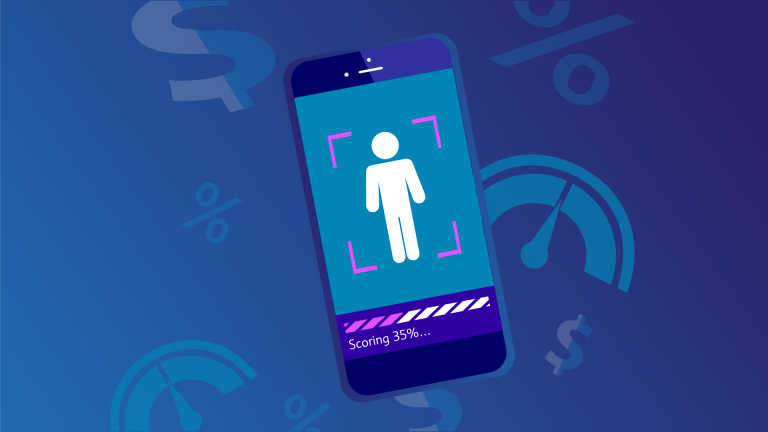Table of Contents
Artificial Intelligence for Credit Scoring
The financial industry is known to be quite a conservative one. Companies have been using traditional scoring methods for decades and remain quite hesitant about any innovations.
However, numbers state that it’s time for a change. Even the slightest mistake in the data can lead to huge consequences. In 2016, an Asia-Pacific bank lost $4 million – all due to some data-entry errors.
As well, traditional scoring limits the opportunity to apply for credit for a vast number of people, like people of color, young adults, etc. Such a biased approach towards credit scoring led to the FinTech companies developing innovative AI-powered solutions that are designed to minimize the scoring bias, lower the number of bad credits and increase the acceptance rate.

But, like any innovation, AI in credit scoring has both pros and cons. We will have a look at both and see how this technology slowly transforms the prudent industry of finances.
The good: benefits of using AI for credit scoring
As mentioned above, one of the biggest problems of traditional scoring methods is biased results.
There are certain standards that have always been defining trustworthy credit borrowers: gender, age, occupation, average income, etc. However, as credit companies continue seeing a high rate of bad loans, it becomes clear that this data is not enough. This is where AI steps in and offers a brand-new approach towards scoring.
Artificial Intelligence technology is capable of analyzing and processing massive data sets and identifying hidden and non-obvious patterns that may actually serve as a decisive factor upon granting a credit. Due to this capability, AI can use much more diverse data for the analysis. For example, AI-powered scoring tools can analyze one’s social media data to form a decision about granting credit.
Such an alternative approach towards lending empowers more people to actually receive credit and improve their credit record. At the same time, the increased accuracy of defining trustworthy borrowers will lower the risks for the credit companies and will let them make data-based and better decisions.
In addition, AI in credit scoring can help to identify the fraudulent behavior and thus, minimize the potential risks and save the company’s revenue.
The bad: the “black box” problem
While AI, indeed, can become a great aid for many financial companies, it also brings certain controversy in terms of data privacy and transparency.
Last year went under the GDPR sign. The EU General Data Protection Regulation states: “You have to explain how you process data in “a concise, transparent, intelligible and easily accessible form, using clear and plain language”.
In other words, every person has the right to demand an explanation of how personal data is collected and processes and the purposes for using it. But how does one explain the processes inside an ML model?
The “black box” problem is the inability to explain how exactly the Machine Learning model determines the creditworthiness of a borrower and decides who is reliable enough. This brings an array of questions: should we make simpler ML models that can be easily explained but sacrifice results accuracy? Is it possible to design a model that would be 100% GDPR compliant?
While many ML models are yet to be optimized in order to become more transparent, there are already some practices that ML engineers should follow to make their products more GDPR-compliant:
1) Describe and document every process
2) Identify all the measures used for risk management
3) Assess all the possible risks (i.e. the right to privacy)
As well, all AI products related to data collection and processing should be made in collaboration with data protection experts to ensure product reliability from the very start.
The ugly: biased decisions
Another big problem of AI-powered solutions for credit scoring is biased results.
On one hand, this statement seems irrational. If Artificial Intelligence can make more accurate and precise decisions, it should mean that they eliminate bias, isn’t that right?
On the other hand, AI models make these decisions based on the data that is “fed” to them. And this data consists of decisions that were made by people – and, most of the time, these decisions were biased. In addition, people set certain definitions for the model – and these definitions for data assessment can be biased, too.
In order for the solution provider to design a non-biased AI model for credit scoring, the company needs to take into consideration all the ethical issues from the start and invest some time and effort into coming up with the right rules and definitions for the model. As well, the data scientists should carefully select the data for model training: if the historical data is biased, the results will be biased too, despite the pre-set definitions and rules.
Conclusion
Artificial Intelligence technology can bring many advantages to credit scoring in terms of accuracy, better assessment, and speed. However, an AI-powered solution also needs to be transparent and explainable in order to comply with the GDPR.
Thus, software development companies need to pay close attention to the quality of the data that they use to train the models and need to set precise and clear goals in order to set up the needed requirements for the model so that it delivers the expected results.


Comments